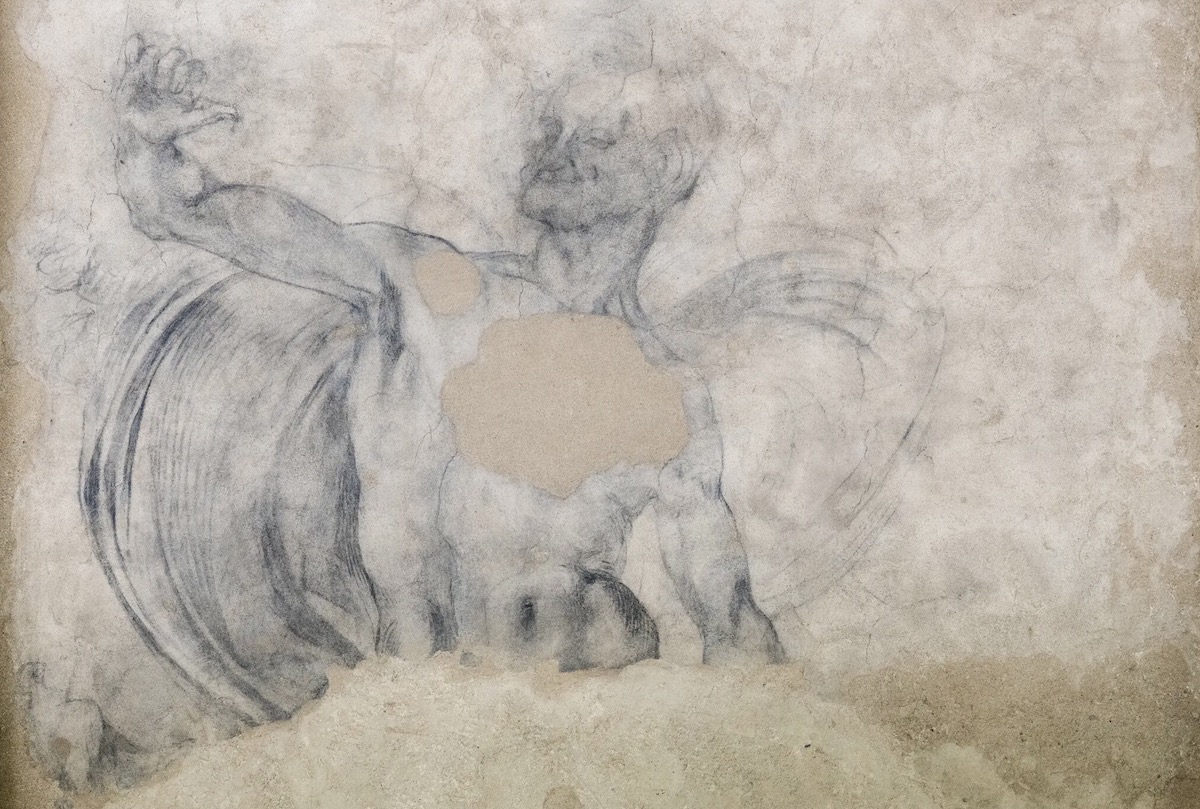The possible sale of a drawing believed to be a work by Michelangelo that once adorned a kitchen wall in a villa overlooking Florence has sparked debate amongst art scholars, underscoring the piece’s historical significance.
Michelangelo lived in the villa as a child and inherited the property later. The Sernesi family, former owners of the villa, had the fresco removed from a kitchen wall in 1979 to restore it. They now seek to sell the piece, sparking discussions over who will buy the artwork and whether it will be accessible to the public.
The sketch depicts a muscular male nude, characteristic of the Renaissance master’s style, executed on plaster. Art historians have been debating for years whether it was, in fact, created by the master, while others feel it is by one of his followers. Regardless, the Sernesi family aims to sell the artwork. The move has prompted scrutiny within the art community.
The drawing has garnered international attention and featured in exhibitions across Japan, Canada, China, and the United States, including the Metropolitan Museum’s prestigious 2017 showcase. Despite its acclaim, scholars still need to agree on whether the work truly represents Michelangelo’s craftsmanship and, if not, what the actual value of the drawing will be.
The potential sale has raised concerns regarding Italy’s cultural heritage laws, which have designated the drawing a national treasure. With strict regulations governing the export of such artworks, the sale process may be influenced by governmental intervention.
Experts note the rarity of Renaissance masterpieces on the market, with works by artists like Michelangelo fetching significant prices when available. However, Italy’s restrictive export laws often deter international buyers, impacting both the sale price and the pool of potential purchasers.
While the Sernesi family remains discreet about the potential price, they are dedicated to safeguarding and sharing their cultural heritage. The drawing’s historical importance and uncertain authorship add complexity to its potential sale.
Art historians trace the drawing’s lineage to Giorgio Vasari, Michelangelo’s contemporary biographer, who referenced the artist’s early sketches on ‘papers and walls.’ However, the drawing’s attribution to Michelangelo remains a subject of intense debate, adding to the mystery and allure of Renaissance art.
Michelangelo di Lodovico Buonarroti Simoni, commonly known as Michelangelo, was born on March 6, 1475, in Caprese, Republic of Florence (present-day Tuscany, Italy).
From a young age, he displayed extraordinary talent and passion for art. At 13, he became an apprentice to the prominent painter Domenico Ghirlandaio, where he honed his skills in drawing and painting. Later, he studied sculpture under the patronage of Lorenzo de’ Medici, the ruler of Florence, at the Medici Palace.
Michelangelo’s artistic career flourished, and he gained recognition for his remarkable sculptures, including the iconic “David” and the “Pieta.” His masterpieces are characterised by their realism, emotional intensity, and technical brilliance, showcasing his profound understanding of human anatomy and form.
In addition to sculpture, Michelangelo was a highly accomplished painter, best known for his work on the ceiling of the Sistine Chapel in Vatican City. The frescoes depict scenes from the Book of Genesis and are considered one of the most outstanding achievements in Western art.
As an architect, Michelangelo contributed significantly to the design of St. Peter’s Basilica in Rome, leaving his mark on the city’s skyline for centuries.
Throughout his life, Michelangelo was driven by a relentless pursuit of perfection and artistic excellence. His works continue to inspire and captivate audiences worldwide, solidifying his legacy as one of the greatest artists in history. Michelangelo passed away on February 18, 1564, in Rome, leaving behind a rich and enduring artistic heritage that continues to be celebrated today.
The Renaissance artist is widely celebrated for his monumental sculptures and spectacular frescoes. Yet, in his drawings, we discover the raw essence of his creative process and witness the meticulous attention to detail and unparalleled mastery of form that defined his work.

